Related Research Articles

Adeline Virginia Woolf was an English writer. She is considered one of the most important modernist 20th-century authors. She pioneered the use of stream of consciousness as a narrative device.

Walter Richard Sickert was a German-born British painter and printmaker who was a member of the Camden Town Group of Post-Impressionist artists in early 20th-century London. He was an important influence on distinctively British styles of avant-garde art in the mid and late 20th century.
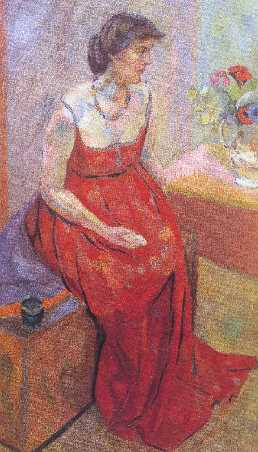
Vanessa Bell was an English painter and interior designer, a member of the Bloomsbury Group and the sister of Virginia Woolf.

Roger Eliot Fry was an English painter and critic, and a member of the Bloomsbury Group. Establishing his reputation as a scholar of the Old Masters, he became an advocate of more recent developments in French painting, to which he gave the name Post-Impressionism. He was the first figure to raise public awareness of modern art in Britain, and emphasised the formal properties of paintings over the "associated ideas" conjured in the viewer by their representational content. He was described by the art historian Kenneth Clark as "incomparably the greatest influence on taste since Ruskin ... In so far as taste can be changed by one man, it was changed by Roger Fry". The taste Fry influenced was primarily that of the Anglophone world, and his success lay largely in alerting an educated public to a compelling version of recent artistic developments of the Parisian avant-garde.

Fitzrovia is a district of central London, England, near the West End. The eastern part of the area is in the London Borough of Camden, and the western in the City of Westminster. It has its roots in the Manor of Tottenham Court, and was urbanised in the 18th century. Its name was coined in the late 1930s by Tom Driberg.

The Camden Town Group was a group of English Post-Impressionist artists founded in 1911 and active until 1913. They gathered frequently at the studio of painter Walter Sickert in the Camden Town area of London.

The London Group is a society based in London, England, created to offer additional exhibiting opportunities to artists besides the Royal Academy of Arts. Formed in 1913, it is one of the oldest artist-led organisations in the world. It was formed from the merger of the Camden Town Group, an all-male group, and the Fitzroy Street Group. It holds open submission exhibitions for members and guest artists.

Dame Ethel Walker was a Scottish painter of portraits, flower-pieces, sea-pieces and decorative compositions. From 1936, Walker was a member of The London Group. Her work displays the influence of Impressionism, Puvis de Chavannes, Gauguin and Asian art. Walker achieved considerable success throughout her career, becoming the first female member elected to the New English Art Club in 1900. Walker's works were exhibited widely during her lifetime, at the Royal Academy, the Royal Society of Arts and at the Lefevre Gallery. She represented Britain at the Venice Biennale four times, in 1922, 1924, 1928 and 1930. Although Walker proclaimed that 'there is no such thing as a woman artist. There are only two kinds of artist — bad and good', she was elected Honorary President of the Women's International Art Club in 1932. Soon after her death, she was the subject of a major retrospective at the Tate in 1951 alongside Gwen John and Frances Hodgkins. Walker is now acknowledged as a lesbian artist, a fact which critics have noted is boldly apparent in her preference for women sitters and female nudes. It has been suggested that Walker was one of the earliest lesbian artists to explore her sexuality openly in her works. While Walker was contemporarily regarded as one of the foremost British women artists, her influence diminished after her death, perhaps due in part to her celebration of female sexuality. Made a Dame Commander of the Order of the British Empire in 1943, Walker was one of only four women artists to receive the honour as of 2010.
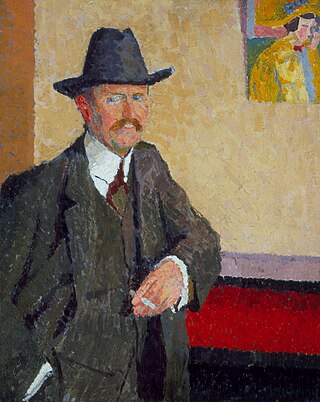
Charles Isaac Ginner was a British painter of landscape and urban subjects. Born in the south of France at Cannes, of British parents, in 1910 he settled in London, where he was an associate of Spencer Gore and Harold Gilman and a key member of the Camden Town Group.
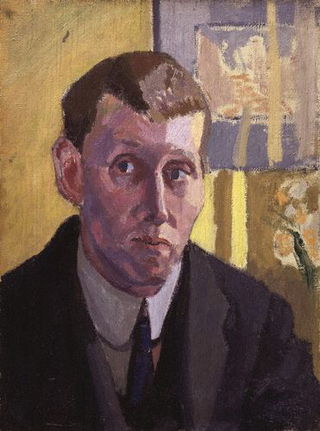
Spencer Frederick Gore was a British painter of landscapes, music-hall scenes and interiors, usually with single figures. He was the first president of the Camden Town Group, and was influenced by the Post-Impressionists.

Harold John Wilde Gilman was a British painter of interiors, portraits and landscapes, and a founder-member of the Camden Town Group.
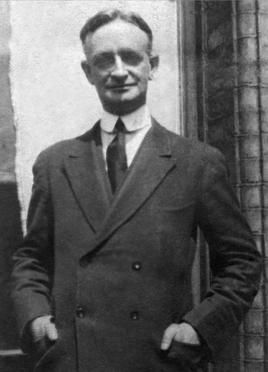
Malcolm Cyril Drummond was an English painter and printmaker, noted for his paintings of urban scenes and interiors. Influenced by the Post-Impressionists and Walter Sickert, he was a member of the Camden Town Group and the London Group.
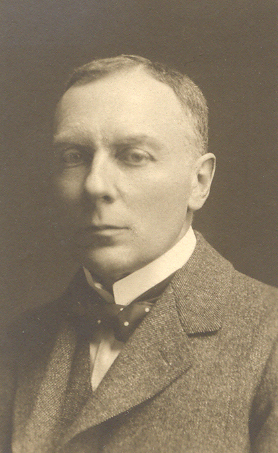
Robert Polhill Bevan was a British painter, draughtsman and lithographer who was married to the Polish-born artist Stanisława de Karłowska. He was a founding member of the Camden Town Group, the London Group, and the Cumberland Market Group.

The Camden Town Murder is a title given to a group of four paintings by Walter Sickert painted in 1908. The paintings have specific titles, such as the problem picture What Shall We Do for the Rent or What Shall We Do to Pay the Rent.
Marjorie Sherlock (1897-1973) was a British painter and etcher. Three books of her etchings were published between 1925 and 1932. Her painting Liverpool Street Station, now in the Government Art Collection, was first shown at the Royal Academy in 1917 and in 1987 was at 10 Downing Street when Margaret Thatcher was Prime Minister of the United Kingdom.
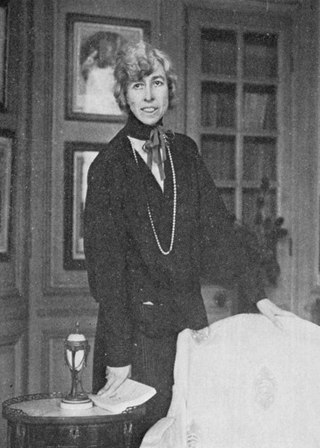
Ethel Sands was an American-born artist and hostess who lived in England from childhood. She studied art in Paris, where she met her life partner Anna Hope Hudson. Her works were generally still lifes and interiors, often of Château d'Auppegard that she shared with Hudson. Sands was a Fitzroy Street Group and London Group member. Her works are in London's National Portrait Gallery and other public collections. In 1916, she became a naturalised British citizen. Although a major art patron and an artist, she is most remembered as a hostess for the cultural elite, including Henry James, Virginia Woolf, Roger Fry and Augustus John.

Anna Hope Hudson (1869–1957) was an American-born artist who lived and worked in France and England. She was a founding member of the London Group, and the life partner of likewise artist Ethel Sands.
Walter John Bayes was an English painter and illustrator who was a founder member of both the Camden Town Group and the London Group and also a renowned art teacher and critic.
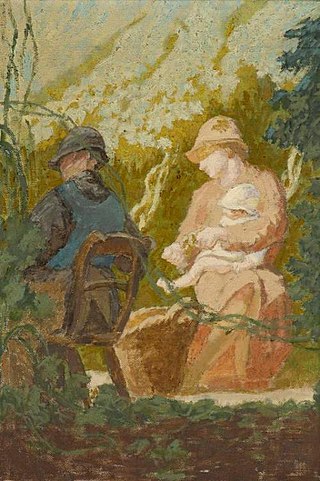
Thérèse Lessore was a British artist who worked in oil and watercolour. She was a founder member of the London Group, and the third wife of Walter Sickert.
Mary Godwin (1887–1960) was a British oil painter, water colourist and etcher, who often chose landscapes, interiors, and figures as subjects. She studied at the Women’s Department of King’s College with John Byam Shaw, and at Westminster Technical Institute with Walter Sickert and Harold Gilman. She was influenced by the Camden Town Group, and joined its successor, The London Group (LG) in 1914.
References
- ↑ Linden Peach. (2010). "6: Virginia Woolf and Realist Aesthetics [ dead link ]," in The Edinburgh Companion to Virginia Woolf and the Arts, ed. Maggie Humm. Edinburgh: Edinburgh University Press. p. 113.
- ↑ Ian Chilvers, A Dictionary of Twentieth-Century Art Archived 17 April 2010 at the Wayback Machine (Oxford: Oxford University Press, 1999), 110.
- ↑ Ethel Sands. Tate. Retrieved 17 January 2014.